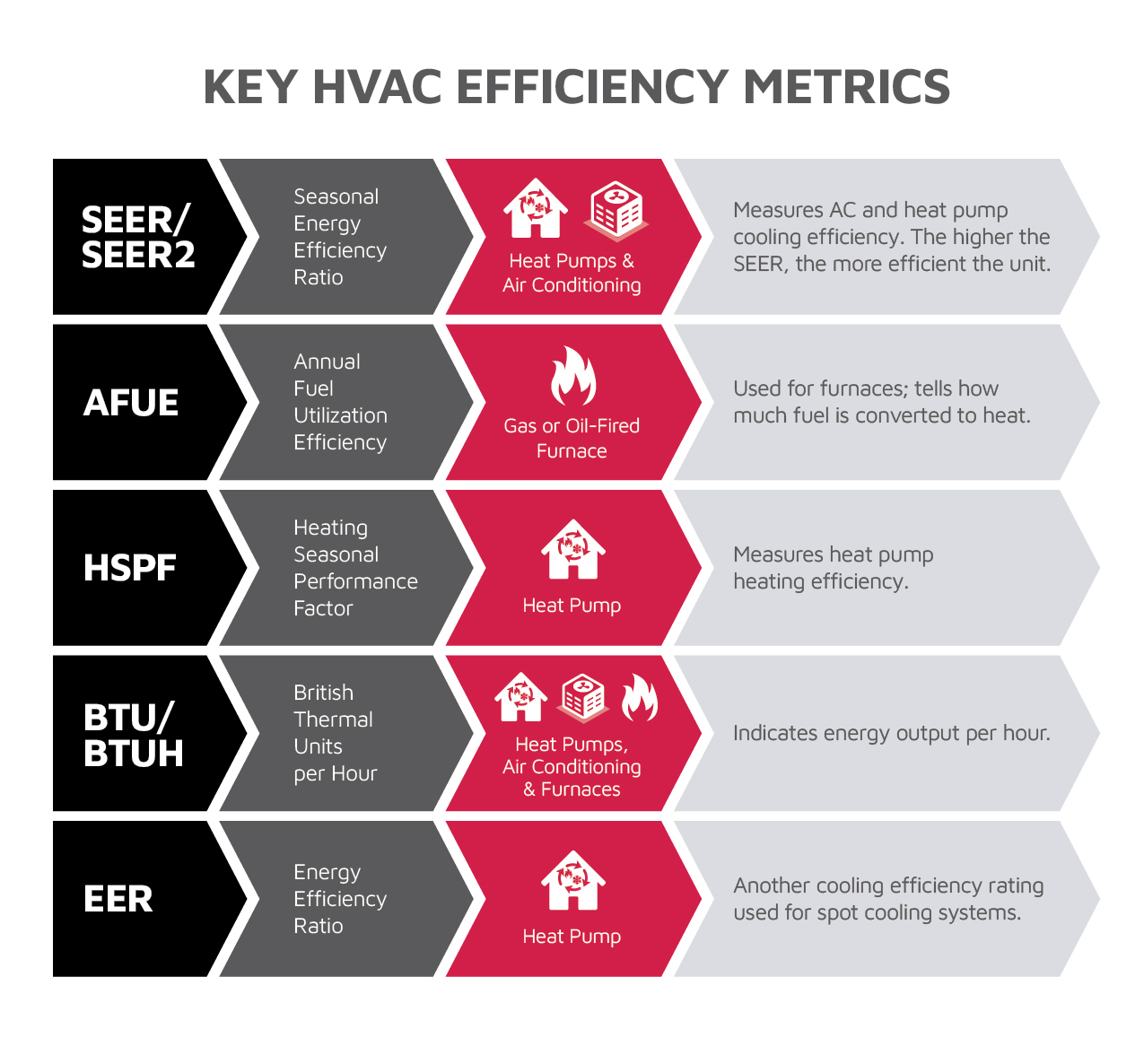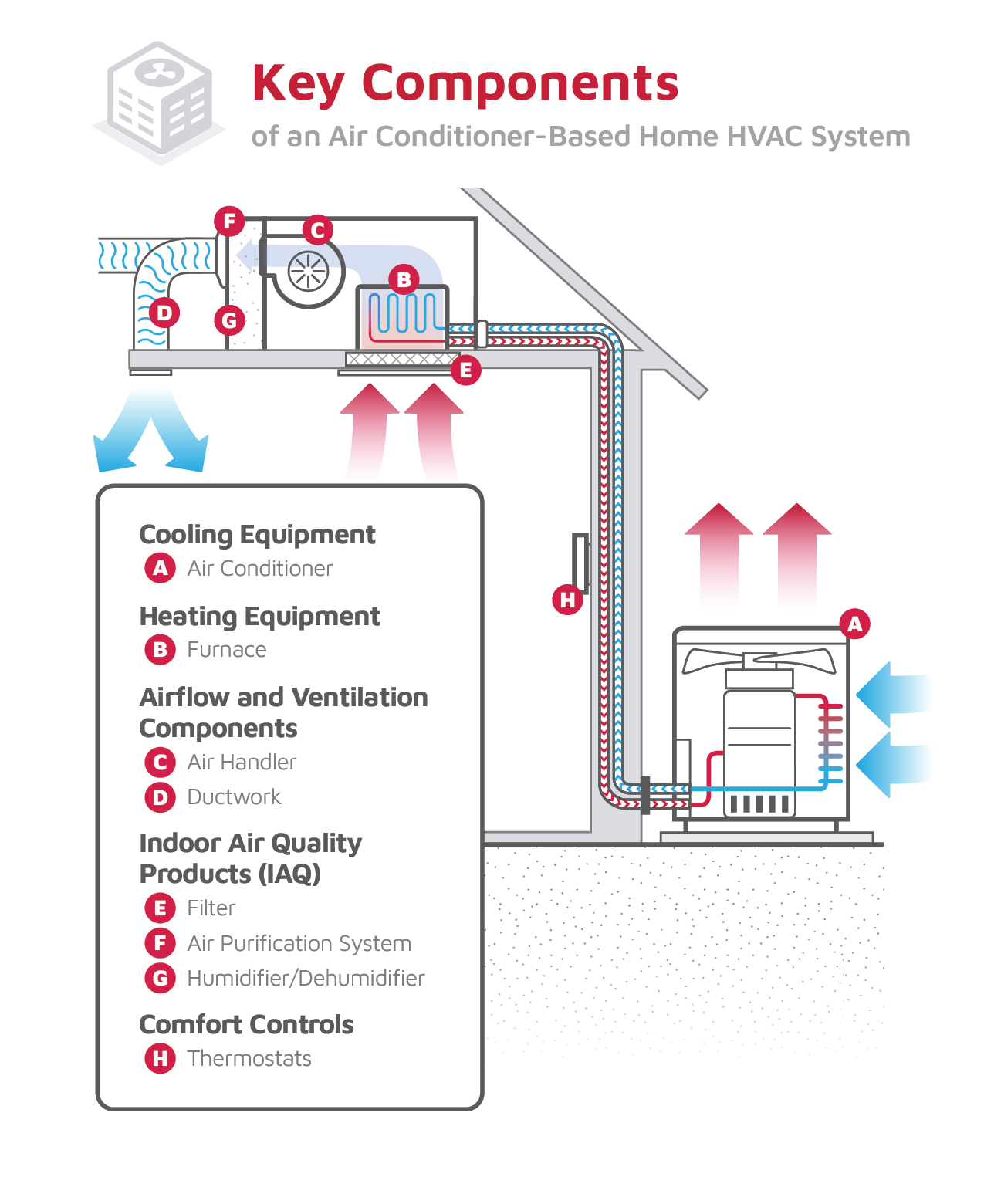Understanding HVAC: What Does HVAC Mean?
When it comes to creating a comfortable home, few systems are more important or essential than the HVAC. We all know HVAC is used to reference the equipment used to heat and cool your house, but what does the broader term HVAC really mean? Let’s delve into HVAC technology (and equipment) a little deeper to understand all it represents.
What Does HVAC Stand For?
HVAC stands for Heating, Ventilation, and Air Conditioning. It refers to the technology and systems used to regulate indoor temperature, air flow, humidity, and air purity within a space. Common HVAC products include furnaces, air conditioners, heat pumps, air handlers, and ventilators. These primary systems are supported by essential components like ductwork, thermostats, and zoning systems.
The term "HVAC" first came into use in the early 20th century, emerging as modern home and commercial building needs demanded more integrated comfort systems.
In residential settings, HVAC systems do more than just heat or cool a home – they play a vital role in energy efficiency, air quality, and the overall comfort of its occupants.
What Is HVAC?
HVAC systems work by conditioning indoor air – removing excess heat or cold, filtering contaminants, and balancing humidity. They also circulate stale air within a home and bring fresh air in from outside, helping maintain healthy indoor air quality and a comfortable environment.
A well-designed HVAC system enhances:
-
- Indoor comfort: by maintaining consistent temperatures and humidity.
- Air quality: through advanced filtration and ventilation.
- Energy efficiency: using smart thermostats and high-efficiency components.
- Indoor comfort: by maintaining consistent temperatures and humidity.
Energy Efficiency in HVAC
With rising energy costs, energy efficiency has become a top priority in HVAC selection. For more energy-efficient options, look for units with ENERGY STAR® certification.

Key HVAC Efficiency Metrics:
-
- SEER / SEER2 (Seasonal Energy Efficiency Ratio): Measures AC and heat pump cooling efficiency. The higher the SEER, the more efficient the unit.
- AFUE (Annual Fuel Utilization Efficiency): Used for furnaces; tells how much fuel is converted to heat.
- HSPF (Heating Seasonal Performance Factor): Measures heat pump heating efficiency.
- BTU / BTUH (British Thermal Units per Hour): Indicates energy output per hour.
- EER (Energy Efficiency Ratio): Another cooling efficiency rating used for spot cooling systems.
- SEER / SEER2 (Seasonal Energy Efficiency Ratio): Measures AC and heat pump cooling efficiency. The higher the SEER, the more efficient the unit.
When choosing an HVAC system, we recommend focusing on high-efficiency models like the Dave Lennox Signature® Collection, which deliver comfort with minimal environmental impact.
Key Components of an HVAC System
A whole home HVAC installation is a complex system made up of multiple components working together for optimal performance:

Heating Equipment
-
- Furnaces: Gas-powered units that heat air and distribute it via ductwork.
- Heat Pumps: Provide both heating and cooling.
- Garage Heaters: A stand-alone heater designed to keep your garage more usable and comfortable.
- Boilers: A heating appliance that uses hot water or steam to heat a space.
- Furnaces: Gas-powered units that heat air and distribute it via ductwork.
Cooling Equipment
-
- Air Conditioners: Extract heat from the home and expel it outdoors.
- Heat Pumps: Provide both cooling and heating.
Airflow and Ventilation Components
-
- Air Handlers: Circulate cooled or heated air.
- Ductwork: Channels conditioned air throughout the home.
- Ventilation Systems: Exchange indoor and outdoor air.
- Air Handlers: Circulate cooled or heated air.
Indoor Air Quality Products
-
- Filters: Remove particulates from the air as it circulates.
- Air Purification Systems: Capture airborne particles and allergens.
- Humidifiers/Dehumidifiers: Balance moisture levels.
Comfort Controls
-
- Thermostats: Smart controls for precise temperature adjustments.
- Zoning Systems: Direct airflow to specific areas of the home
Types of HVAC Systems
Lennox offers a range of system configurations to suit a variety of home layouts and needs:
-
- Ductless Mini-Split Systems: Ideal for additions or homes without ductwork.
- Packaged Systems: All-in-one units often installed outside or on rooftops.
- Dual-Fuel Systems: Combine a heat pump/air conditioner and furnace for optimal efficiency.
How Do HVAC Systems Work?
HVAC systems work on principles of thermal transfer and airflow. Heating elements generate warmth, cooling systems absorb and remove heat, and ventilation ensures proper air circulation.
This process involves three key steps:
-
- Air Intake: The system draws air from the environment.
- Conditioning: The air is heated or cooled to the desired temperature.
- Distribution: Conditioned air is circulated throughout the home via ductwork.
Thermostats are the control center of HVAC systems, regulating indoor temperature and comfort. They monitor air temperature and signal heating or cooling equipment to turn on or off based on the setpoint. Lennox smart thermostats add features like scheduling, remote access, and energy efficiency monitoring, helping maintain comfort while boosting system performance and lifespan.
Airflow and ventilation are also key to residential HVAC performance, ensuring comfort and air quality. Airflow is the act of moving heated or cooled air through ducts for even temperature distribution, while ventilation is the exchange of indoor and outdoor air to remove pollutants and moisture. Together, they also contribute to enhanced system efficiency, reliability, and home health.
Choosing the Right HVAC System for Your Home
Selecting the right system for your home depends on several factors. When looking for a system for your home, you should always consider:
-
- The home’s age, size, design, and insulation quality
- Your climate zone
- The condition of your ductwork
- Your personal comfort preferences
The cost of a residential HVAC system can vary widely depending on the size of your home, the type of system you choose, and installation requirements. On average, a complete system – including heating, cooling, and ductwork –can range from $5,000 to $15,000 or more. While this is a significant investment, modern HVAC systems offer improved energy efficiency, lower utility bills, and long-term comfort. Many homeowners also benefit from financing options, rebates, or tax incentives that help make the upgrade more affordable.
To ensure you select the right, personalized solution for your needs, we recommend consulting a certified Lennox Dealer. They will conduct a home energy audit and guide you toward the ideal solution – be it a high-efficiency furnace, quiet air conditioner, or complete comfort system.
HVAC System Installation
Professional installation is crucial. Poorly installed systems can reduce efficiency, create safety hazards, and shorten equipment lifespan. Lennox works with a network of trusted dealers to ensure every installation meets the brand's high standards.
As we hope we’ve illustrated, HVAC systems aren’t just a collection of equipment – they’re smart, connected ecosystems designed to keep your home comfortable, healthy, and efficient. With Lennox, you get more than just HVAC hardware – you get innovation, peace of mind, and a home that feels just right, every day of the year.



